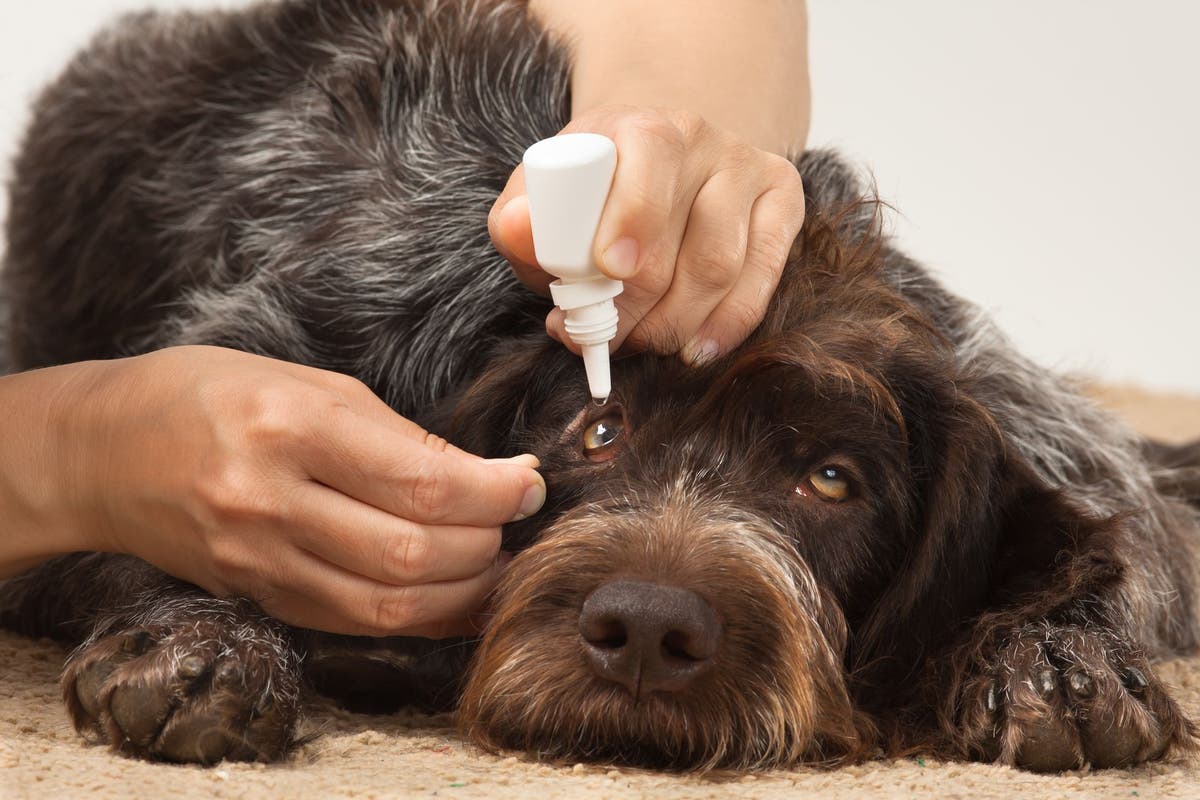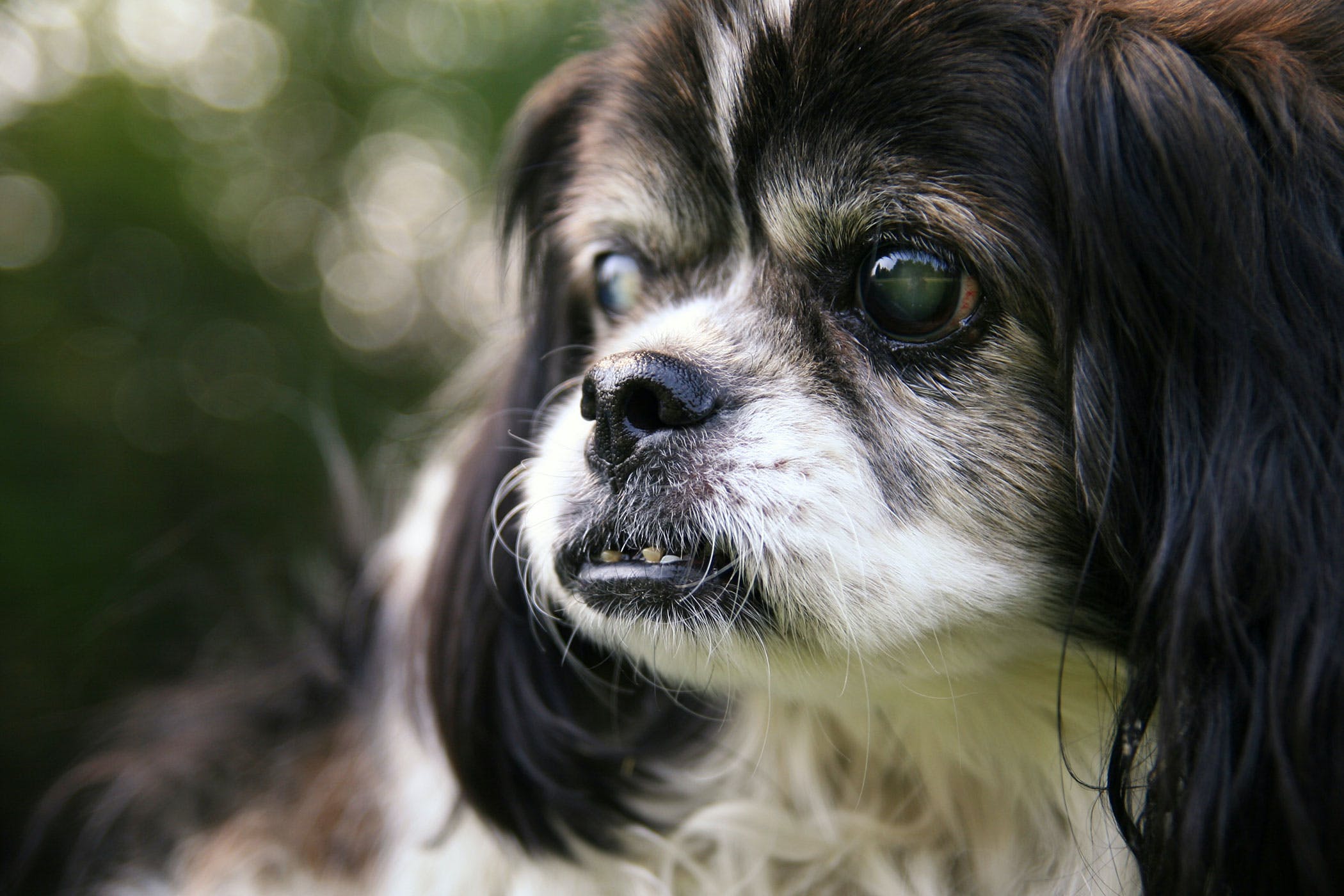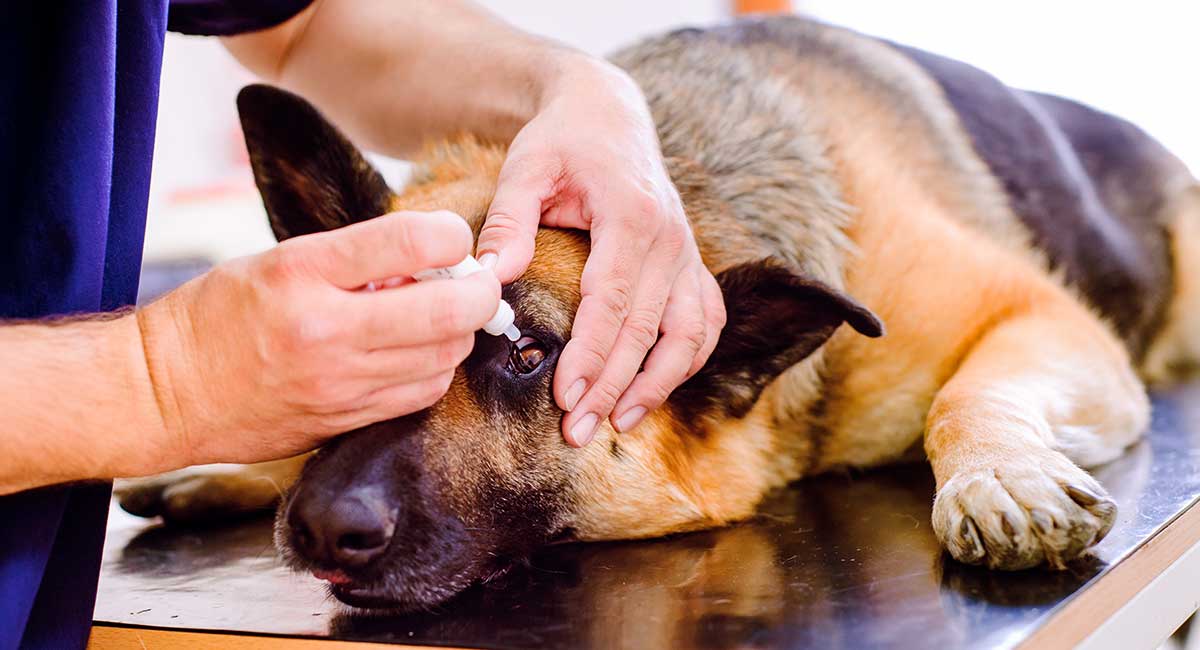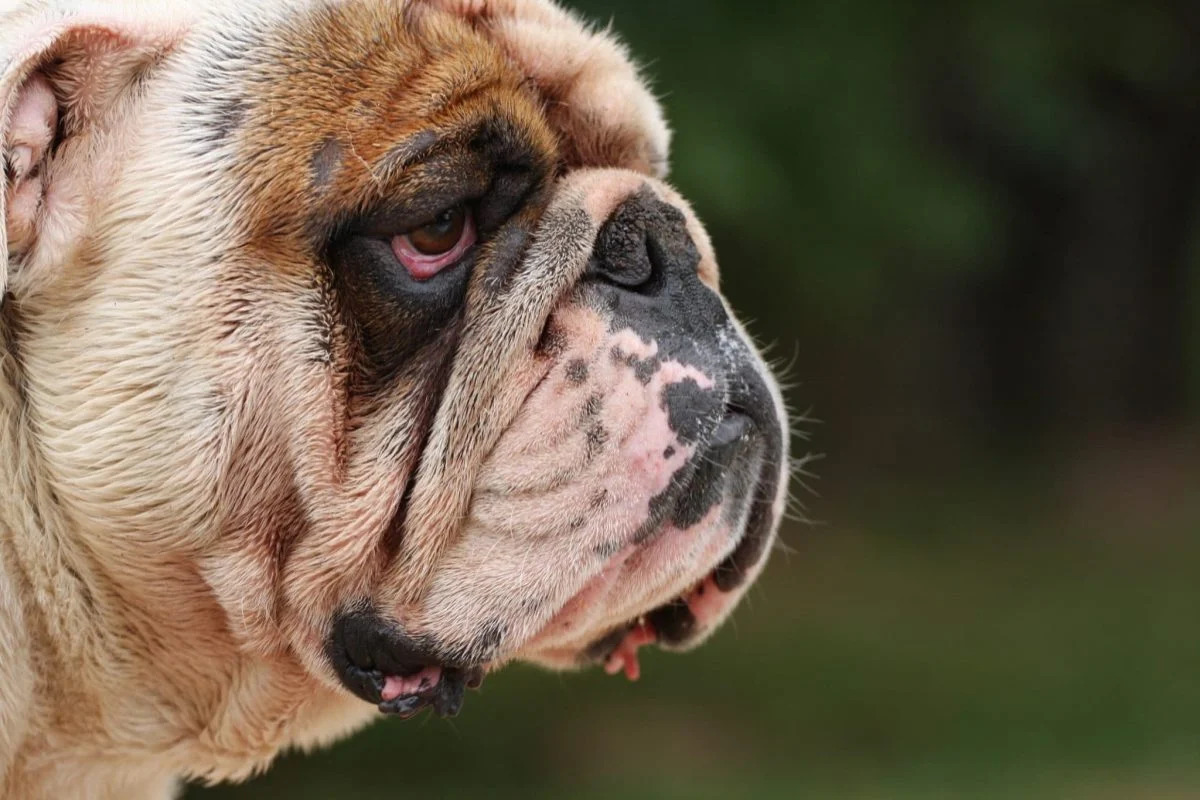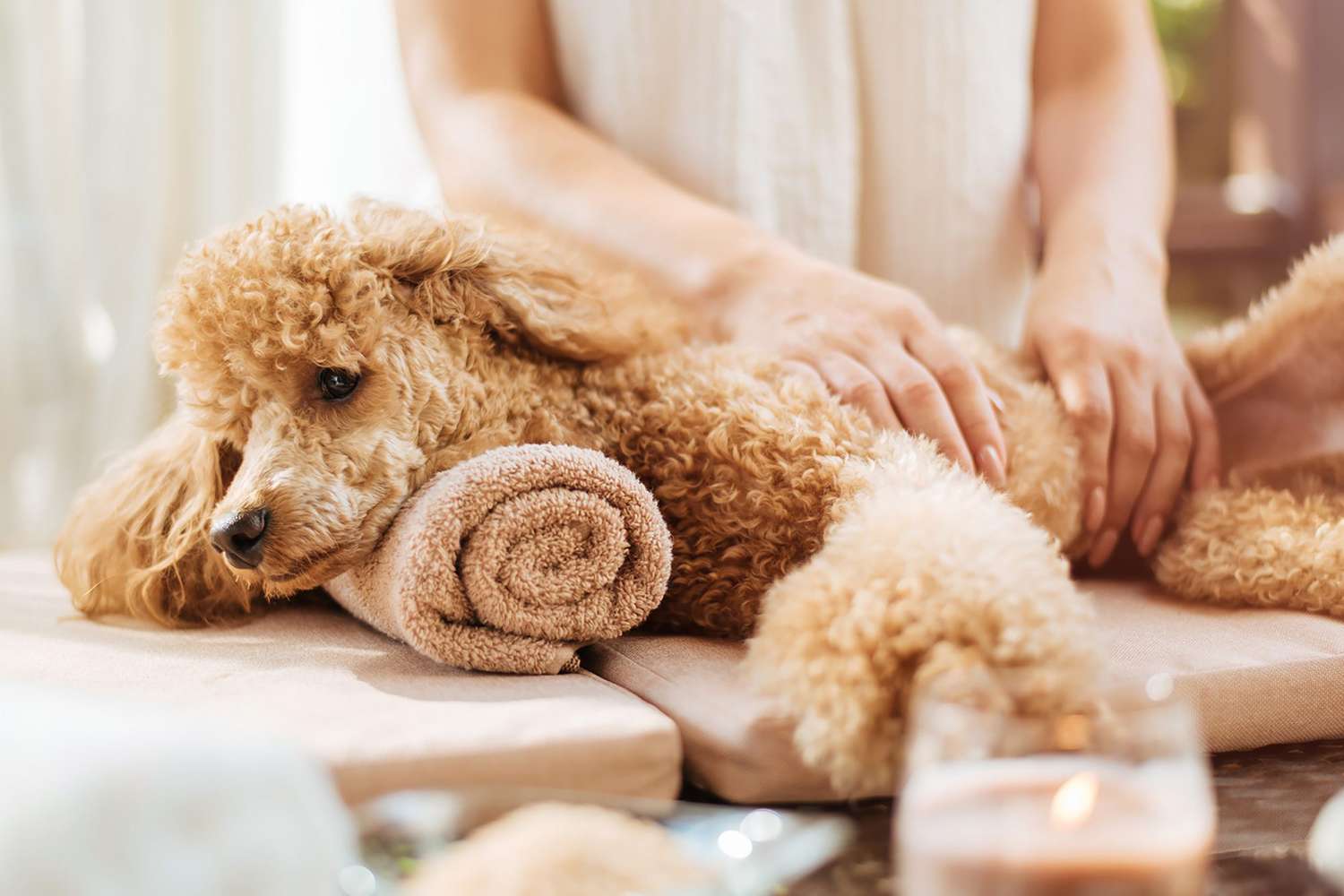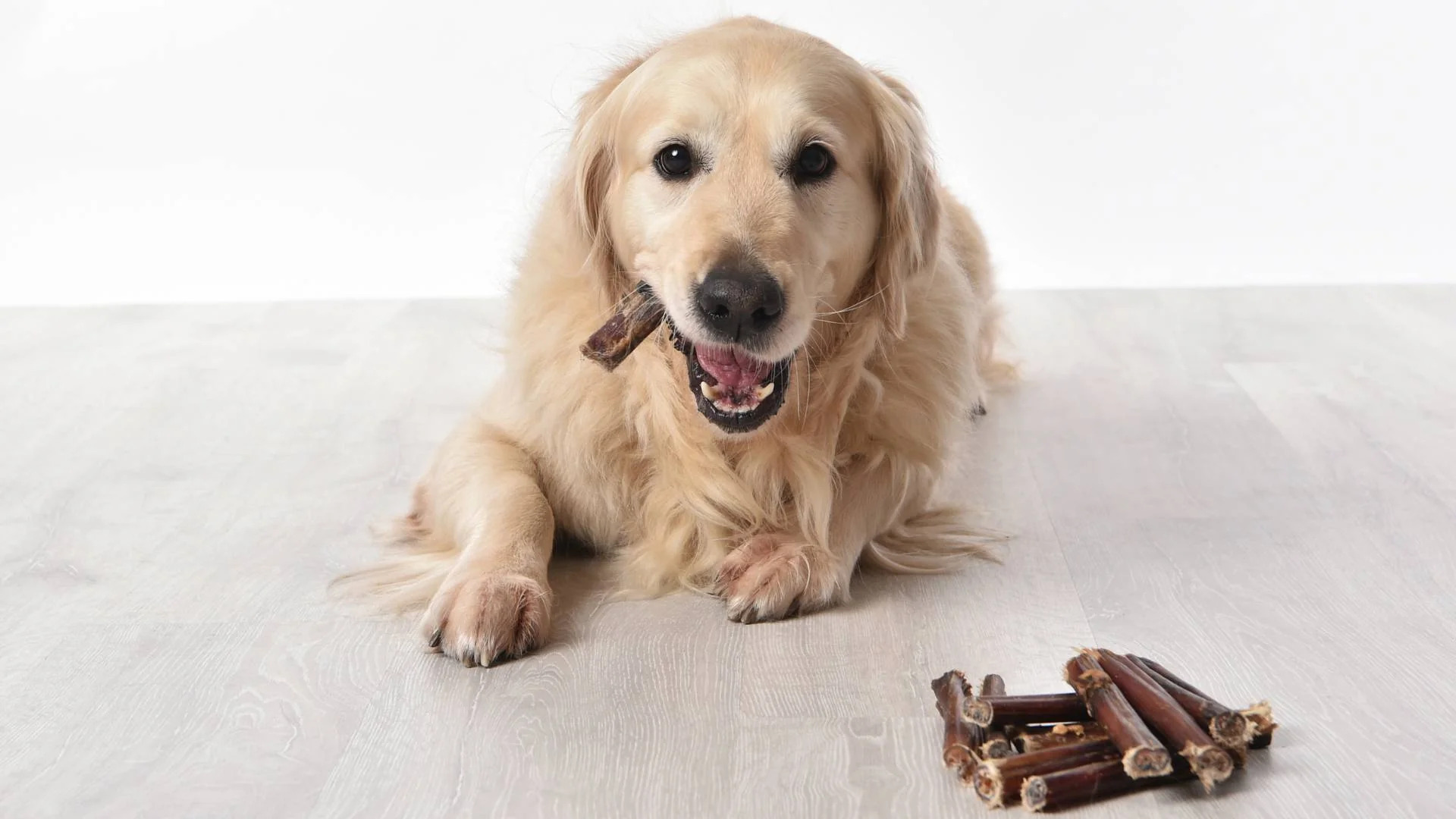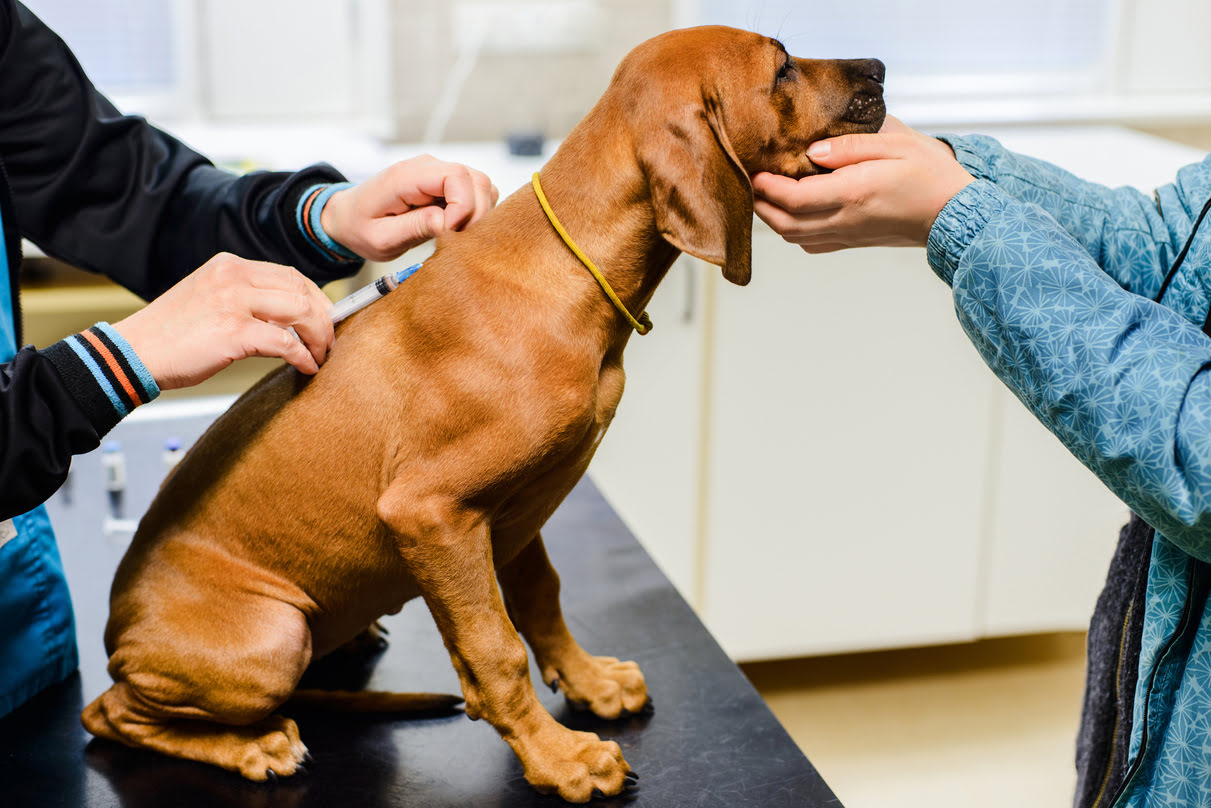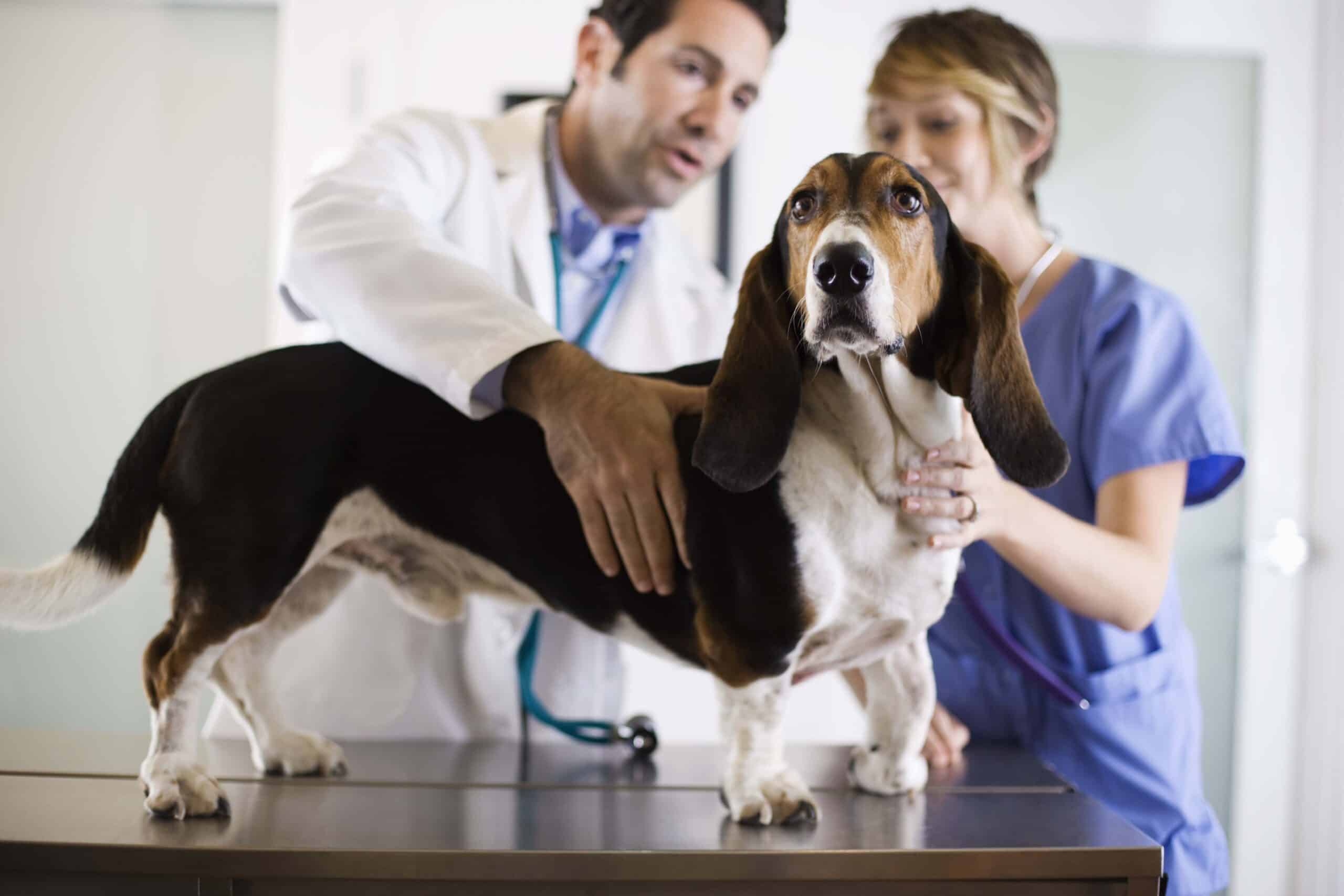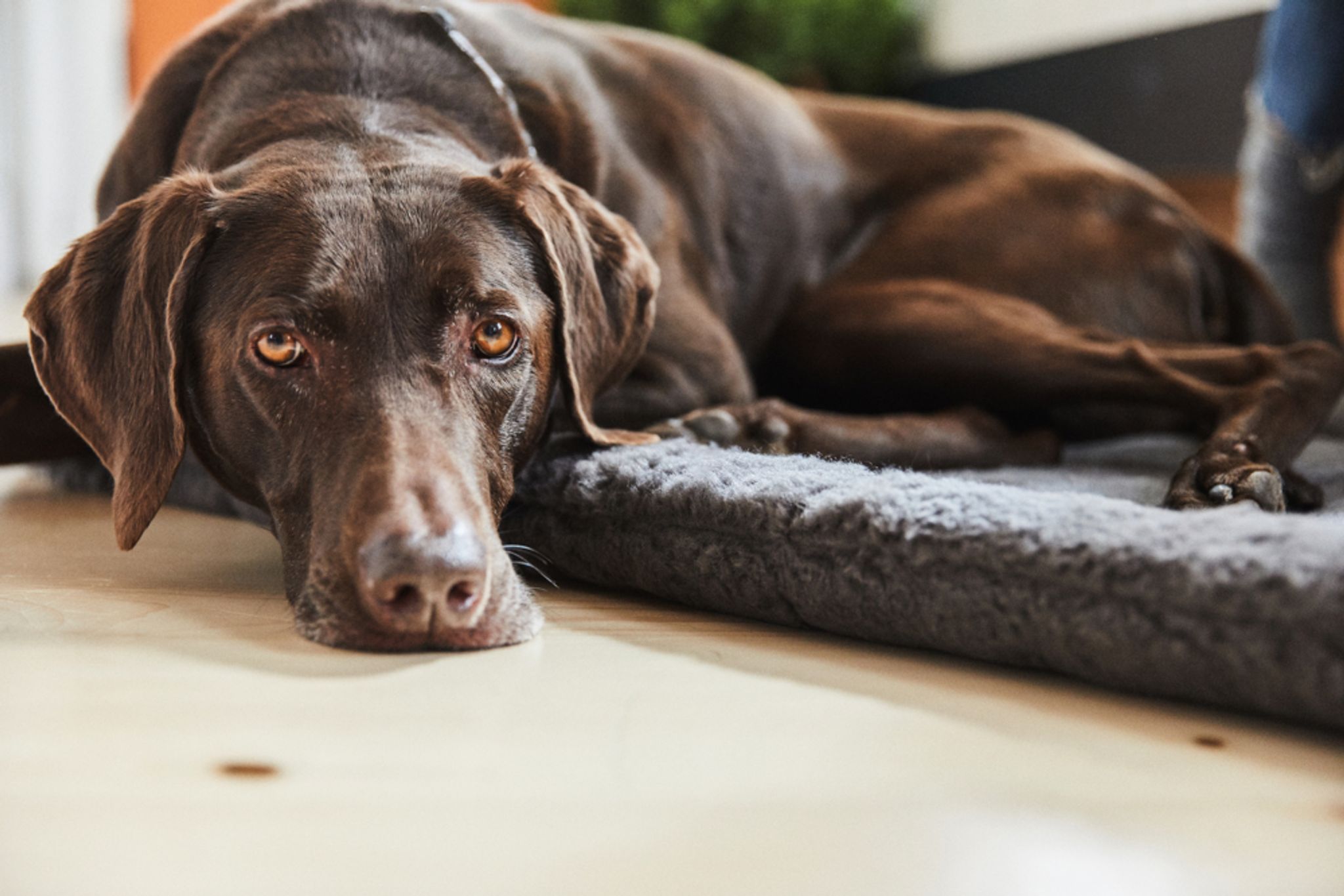Home>Health & Wellness>Common Health Issues>Eye and Ear Health>How To Give A Dog Eye Drops


Eye and Ear Health
How To Give A Dog Eye Drops
Published: February 12, 2024
Learn how to safely administer eye drops to your dog for optimal eye and ear health. Follow these expert tips for a stress-free experience.
(Many of the links in this article redirect to a specific reviewed product. Your purchase of these products through affiliate links helps to generate commission for Pawsomeoldies.com, at no extra cost. Learn more)
Table of Contents
Introduction
Administering eye drops to your furry companion may seem like a daunting task, but with the right approach and understanding, it can be a manageable and beneficial experience for both you and your dog. Just like humans, dogs may require eye drops to alleviate discomfort, treat infections, or manage certain eye conditions. Whether your canine friend is dealing with an injury, infection, or a chronic eye condition, knowing how to properly administer eye drops is essential for their well-being.
In this comprehensive guide, we will delve into the process of giving your dog eye drops, from understanding the need for this treatment to practical tips for success. By gaining insight into the importance of eye drops for dogs and learning the proper techniques for administration, you can ensure that your beloved pet receives the care they need while minimizing stress and discomfort. Let's embark on this journey to empower you with the knowledge and confidence to support your dog's eye health effectively.
Understanding the need for eye drops in dogs
Eye drops play a crucial role in maintaining the ocular health of dogs. Just like humans, dogs can experience a range of eye issues that may necessitate the use of eye drops for treatment and relief. Understanding the common reasons for administering eye drops to dogs is essential for pet owners to provide the necessary care and support.
Common Eye Conditions in Dogs
Dogs are susceptible to various eye conditions, including conjunctivitis, corneal ulcers, dry eye (keratoconjunctivitis sicca), and allergies. These conditions can cause discomfort, redness, discharge, and in severe cases, vision impairment. Additionally, aging dogs may develop cataracts, leading to cloudy or opaque lenses that can impact their vision. In such instances, eye drops are often prescribed to alleviate symptoms, reduce inflammation, and promote healing.
Injury and Infection
Accidental injuries, such as scratches or foreign objects in the eye, can occur during outdoor activities or play. These injuries can lead to irritation, infection, and potential damage to the eye. Eye drops are vital in preventing infection, reducing inflammation, and promoting the healing process. Moreover, dogs with entropion, a condition where the eyelids roll inward, may require lubricating eye drops to minimize discomfort and protect the cornea from abrasions.
Chronic Conditions
Certain dog breeds are predisposed to chronic eye conditions, such as glaucoma or progressive retinal atrophy. Glaucoma, characterized by increased pressure within the eye, can lead to pain and irreversible vision loss if left untreated. In such cases, eye drops are often prescribed to manage the condition by reducing intraocular pressure and preserving vision. Similarly, dogs with progressive retinal atrophy, a degenerative disease affecting the retina, may benefit from specialized eye drops to support retinal function and delay vision deterioration.
Read more: What Eye Drops Are Good For Glaucoma In Dogs
Overall Eye Health
Regular use of eye drops can contribute to maintaining overall eye health in dogs, especially as they age. Lubricating eye drops can help combat dryness and irritation, particularly in senior dogs or those with reduced tear production. Additionally, routine eye examinations by a veterinarian can detect early signs of eye issues, allowing for prompt intervention and the appropriate use of eye drops to prevent further complications.
Understanding the diverse reasons for using eye drops in dogs underscores the significance of proactive eye care and prompt treatment. By recognizing the need for eye drops in various eye conditions, pet owners can advocate for their dog's ocular health and collaborate with veterinarians to ensure the optimal well-being of their canine companions.
Preparing to give your dog eye drops
Before embarking on the process of administering eye drops to your dog, it is crucial to adequately prepare for the task to ensure a smooth and stress-free experience for both you and your furry friend. Proper preparation lays the foundation for successful eye drop administration and minimizes potential challenges that may arise during the process.
Create a Calm Environment
Establishing a calm and comfortable environment is essential for preparing your dog to receive eye drops. Choose a quiet and familiar space where your dog feels relaxed, such as a favorite room or a cozy corner. Minimize distractions and loud noises to help your dog remain calm and focused during the administration of the eye drops.
Gather Essential Supplies
Gather all the necessary supplies before initiating the process. This includes the prescribed eye drops, a clean and soft cloth for gently wiping away any discharge or debris from the eye, and treats or rewards to reinforce positive behavior. Having these items readily available ensures a seamless and efficient administration process.
Familiarize Your Dog with Handling
Prior to administering the eye drops, it is beneficial to familiarize your dog with gentle handling around the face and eyes. Gently stroke and touch your dog's face, gradually progressing to brief touches around the eye area. This helps desensitize your dog to touch around the eyes and reduces potential resistance during the actual administration of the eye drops.
Seek Assistance if Needed
If your dog tends to be particularly anxious or resistant to eye drop administration, consider seeking assistance from a family member or friend. Having an additional person present can provide support in holding your dog gently and securely, making the process more manageable and less stressful for both you and your pet.
Consult with Your Veterinarian
Before initiating the use of eye drops, consult with your veterinarian to ensure that you fully understand the prescribed dosage, frequency, and proper administration technique. Seek clarification on any concerns or questions you may have regarding the use of the eye drops, and follow the veterinarian's guidance to ensure the best possible outcome for your dog's eye health.
By diligently preparing for the administration of eye drops, pet owners can set the stage for a positive and effective experience for their dogs. Creating a calm environment, gathering essential supplies, familiarizing the dog with handling, seeking assistance if needed, and consulting with a veterinarian are pivotal steps in preparing to give your dog the necessary eye drops with care and confidence.
Administering the eye drops
Administering eye drops to your dog requires patience, precision, and a gentle approach to ensure the successful delivery of the medication. By following the proper technique, you can effectively administer the eye drops while minimizing stress for your furry companion.
Step-by-Step Process
-
Restrain Your Dog: Gently restrain your dog in a comfortable position, ensuring that they feel secure and supported. If needed, have a family member or friend assist in holding your dog gently to prevent sudden movements.
-
Prepare the Eye Drops: Shake the eye drop bottle gently to ensure the contents are well mixed. Unscrew the cap and place it in a clean and easily accessible location.
-
Position Yourself: Position yourself in a way that allows easy access to your dog's eye. Sit or kneel beside your dog, maintaining a calm and reassuring demeanor.
-
Hold the Eye Open: Using one hand, gently hold your dog's head to prevent sudden movements. With your other hand, carefully hold the upper eyelid and gently pull it upwards to expose the eye.
-
Administer the Drops: Hold the eye drop bottle close to the eye, ensuring that it does not make direct contact with the eye's surface. With a steady hand, apply the prescribed number of drops into the lower eyelid pouch. Avoid touching the eye or eyelashes with the tip of the bottle.
-
Close the Eye: Release your dog's head and allow them to blink naturally, which helps distribute the eye drops evenly across the eye's surface.
-
Reward and Comfort: Immediately after administering the eye drops, offer your dog verbal praise, gentle petting, or a small treat to reinforce positive behavior and create a positive association with the process.
Additional Tips
-
Consistency: Administer the eye drops at the prescribed times and adhere to the recommended dosage to ensure the effectiveness of the treatment.
-
Observe for Reactions: Monitor your dog for any adverse reactions or discomfort after administering the eye drops. If you notice any unusual symptoms, consult your veterinarian promptly.
-
Maintain Hygiene: Ensure that the tip of the eye drop bottle does not come into contact with any surfaces to prevent contamination. Recap the bottle securely after use.
By following these steps and tips, you can confidently administer eye drops to your dog, contributing to their ocular health and overall well-being. Remember, patience and a gentle approach are key to making the experience as stress-free as possible for your beloved canine companion.
Tips for success
Successfully administering eye drops to your dog requires a combination of patience, precision, and a compassionate approach. To ensure a positive experience for both you and your furry companion, consider the following tips for success:
1. Establish a Routine
Consistency is key when it comes to administering eye drops to your dog. Establish a routine for administering the eye drops at the prescribed times each day. By integrating this task into your dog's daily schedule, you can create a sense of predictability and familiarity, making the process more manageable over time.
2. Positive Reinforcement
Create a positive association with the administration of eye drops by offering verbal praise, gentle petting, or a small treat immediately after the process. Positive reinforcement can help alleviate any apprehension or resistance your dog may have, making subsequent administrations more cooperative and less stressful.
3. Gentle Handling
Approach your dog with gentleness and patience throughout the entire process. From restraining your dog in a comfortable position to holding the eye open and administering the drops, maintaining a gentle touch can help alleviate any anxiety or discomfort your dog may experience.
4. Minimize Stress
Choose a quiet and familiar environment for administering the eye drops to minimize stress for your dog. Minimize distractions and loud noises to create a calm atmosphere, allowing your dog to feel more at ease during the process.
5. Seek Veterinary Guidance
Consult with your veterinarian if you encounter any challenges or concerns related to administering the eye drops. Your veterinarian can provide valuable insights, address any difficulties you may face, and offer additional tips tailored to your dog's specific needs.
6. Monitor Progress
Observe your dog's response to the eye drops and monitor their eye condition regularly. Look for signs of improvement, such as reduced redness or discharge, and communicate any changes to your veterinarian. Regular monitoring allows for adjustments in the treatment plan if necessary.
7. Maintain Cleanliness
Ensure that the eye drop bottle remains clean and uncontaminated. Avoid touching the tip of the bottle to any surfaces, and securely recap the bottle after each use to maintain hygiene and prevent potential contamination.
By incorporating these tips into the process of administering eye drops to your dog, you can enhance the overall experience and contribute to the effectiveness of the treatment. Remember, patience, consistency, and a compassionate approach are fundamental in ensuring the well-being of your beloved canine companion.
Conclusion
In conclusion, the proper administration of eye drops to dogs is a significant aspect of maintaining their ocular health and overall well-being. Understanding the diverse reasons for using eye drops, from addressing common eye conditions to managing injuries and chronic issues, underscores the importance of proactive eye care for our canine companions. By recognizing the need for eye drops and embracing the responsibility of administering them with care and precision, pet owners can play a pivotal role in supporting their dogs' eye health.
Preparation is key to ensuring a smooth and stress-free experience when giving your dog eye drops. Creating a calm environment, gathering essential supplies, familiarizing your dog with gentle handling, seeking assistance if needed, and consulting with a veterinarian are crucial steps in preparing for this essential task. These preparatory measures lay the foundation for successful eye drop administration and contribute to a positive experience for both the pet owner and the dog.
The step-by-step process of administering eye drops, coupled with additional tips for success, provides a comprehensive guide for pet owners. From restraining the dog in a comfortable position to offering positive reinforcement and maintaining hygiene, each step and tip is designed to facilitate the effective and gentle administration of eye drops. By following these guidelines, pet owners can confidently and compassionately care for their dog's ocular health.
Furthermore, the incorporation of routine, positive reinforcement, and gentle handling techniques can significantly impact the overall experience of administering eye drops to dogs. Consistency, patience, and a compassionate approach are fundamental in ensuring that the process is as stress-free as possible for the dog, fostering a trusting and cooperative relationship between the pet owner and their furry companion.
In essence, the successful administration of eye drops to dogs is a collaborative effort between pet owners and their veterinarians, aimed at promoting the ocular health and comfort of our beloved canine companions. By embracing this responsibility with empathy and dedication, pet owners can contribute to the well-being and quality of life of their dogs, ensuring that they receive the care and support they deserve for their eye health.
